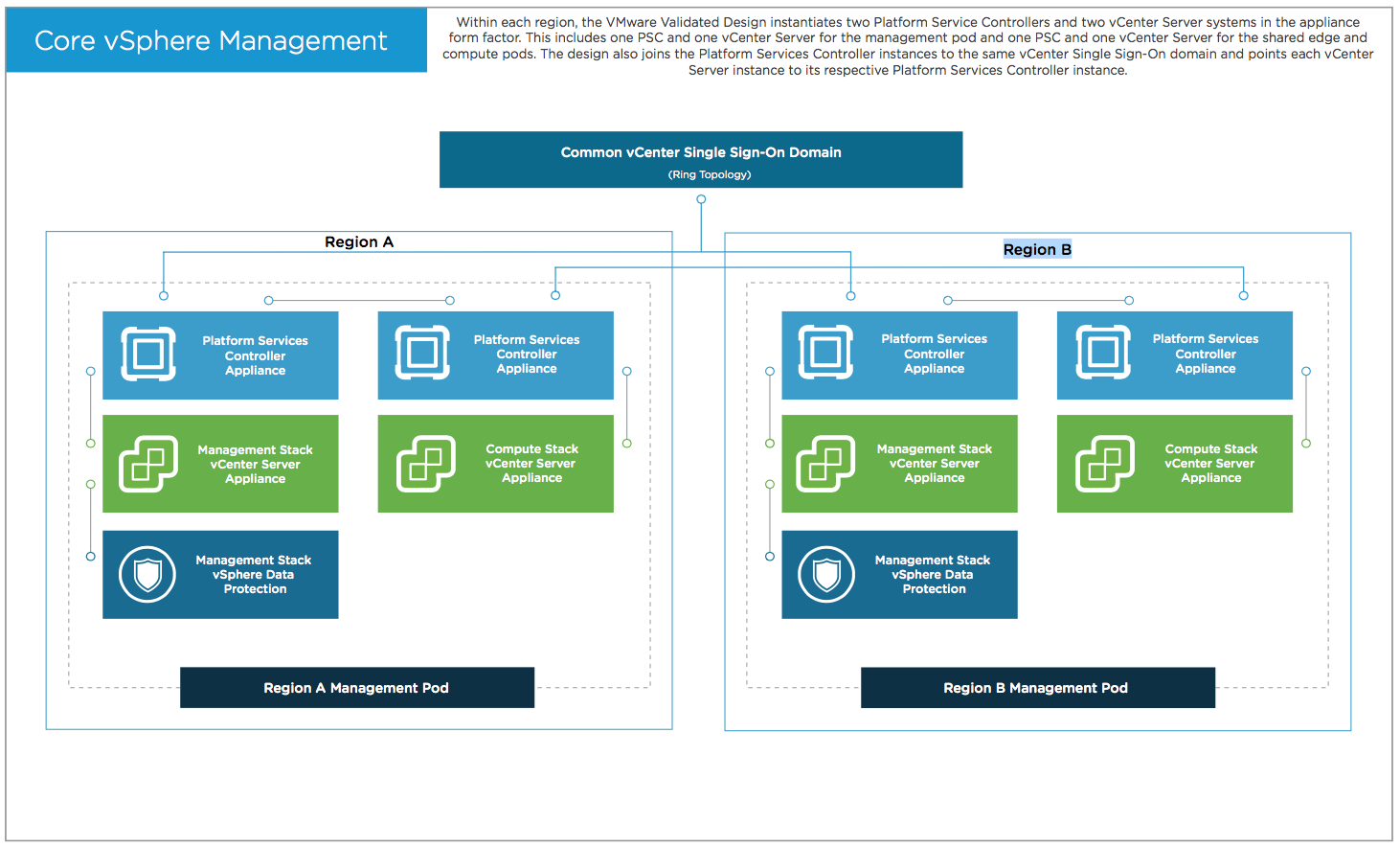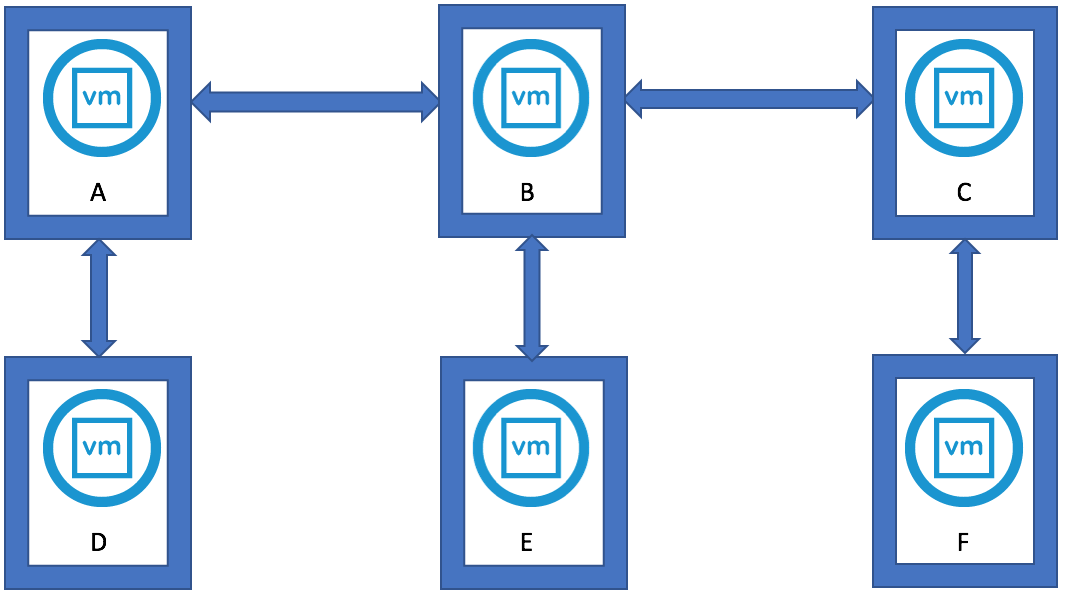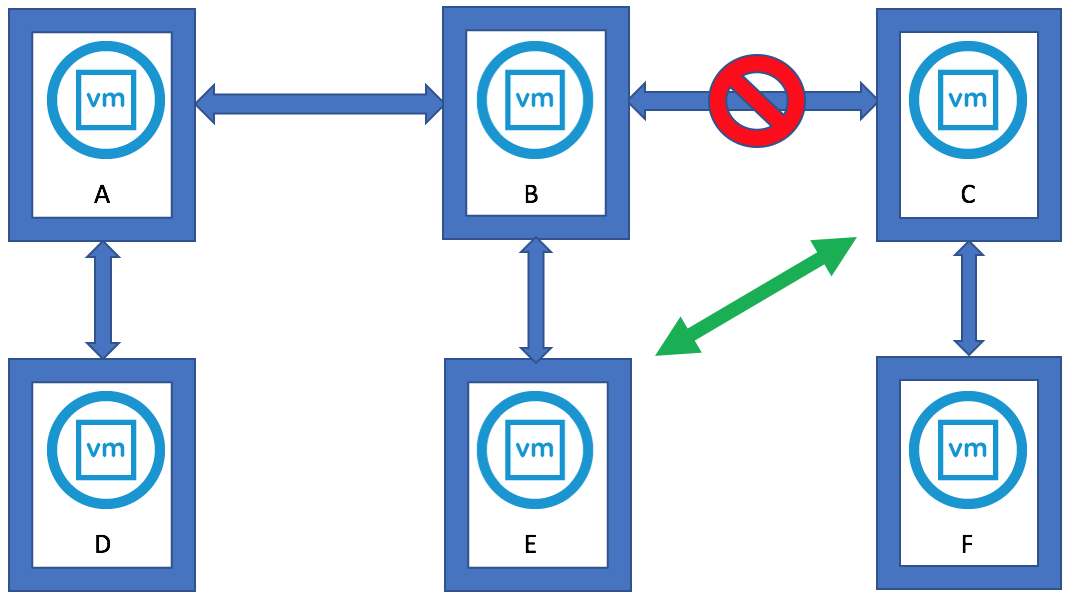PSC 6 Replication
VMware Validated Designs
First of all I’d like to talk about VMware Validated Designs before going on to talk about how these can be incorporated into replicated PSC designs.
VMware Validated Designs deliver holistic data center-level designs that span compute, storage, networking and management, defining the gold standard for how to deploy and configure the complete VMware SDDC stack in a wide range of use cases. VMware Validated Designs include detailed guidance that combine with best practices on how to operate a VMware SDDC optimally. The benefits are
- Accelerate time to market
- Increase efficiency
- De risk deployments and operations
- Drive agility
- Repeatable proven solutions
When looking to implement any software from the SDDC suite, we are now referring to the VMware Validated Designs for a repeatable proven solution. Of course there may always be modifications required to fit customers environments but the idea going forwards is to maintain the same standards of installation and configuration
Platform Services Controller Topology Decision Tree
Adam Eckerle from VMware has very kindly designed a poster containing a decision tree for anyone thinking of deploying PSCs and guides you through a set of decisions before deployment
PSC and Replication Points
- All PSC replication is bi-directional but ring topology setups have to be manually created
- Ring topology is now the recommended method, not mesh as it was previously
- By default each PSC is replicating with only a single other PSC (the one you select when installing the additional secondary or tertiary PSC)
- Site names do not have anything to do with replication today they are a logical construct for load balancers and future usage
- Changes are not unique to a site but to a domain assuming they are part of the vsphere.local domain
- vCenter only points to one PSC at a time or a load balanced address
- PSC’s have to be part of the same domain together to use enhanced linked mode
Why Ring Topologies and not Mesh Topologies?
- Ring Topologies allow for easier scaling out
- They are easier to set up and maintain. There’s no issue with breaking and recreating replication agreements. vdcrepadmin does this and it actually protects the customer by not allowing them to delete the only agreement available. This prevents a customer from inadvertently creating an isolated PSC. What you would do is go through and create the new agreements and once they are in place just delete the extra ones. There is nothing special about the replication agreements that are created during PSC deployment. They are the same as ones created with vdcrepadmin
- The failure of any one component in a ring does not cause replication partitions
- Minimal links can be created for maximum redundancy which is increased when load balancers are used.
2 Site VVD Design
In the diagram below, you can see within each region/site, the VMware Validated Design instantiates two Platform Services Controllers and two vCenter Server systems in the appliance form factor. This includes one PSC and one vCenter for the management pod and one PSC and one vCenter for the shared edge and compute pod. The design also joins the Platform Services Controller instance to its respective Platform Services Controller instance.
3 Site VVD Design
When we start getting into a 3 site multisite design, we can then see how keeping it simple makes life a great deal easier. Below is a series of diagrams which show how this can be set up with a recommended ring topology.
This particular example uses 3 sites with 2 PSCs in each. There is no load balancer.
Steps
- When initially installing the external PSCs, PSCA will be the first standalone PSC. PSCB will be installed next and partnered with PSCA. PSCC is then installed and partnered with PSCB. This is 2 way automatic replication in an inline configuration
- If we wanted to make it a ring topology with just these 3 servers we could do the following and create a replication agreement between PSCA and PSCC
- Now we add the second PSCs into each site and we get the following scenario. 2 way automatic links are created between the first and second PSC in each site (A and D) (B and E) and (C and F)
- Now we see we have kind of lost our inline topology and how do we create a ring now? We want an inline topology of D > A > B > E > C > F
- We actually need to create a new agreement between PSCE and PSCC followed by breaking the link between PSCB and PSCC. Remember the system will not let us break a replication agreement which would leave a PSC isolated so we need to create a link first
- We will now get the following inline configuration
- Next we want to create our ring topology. A replication agreement is created between PSCD and PSCF to create the ring









